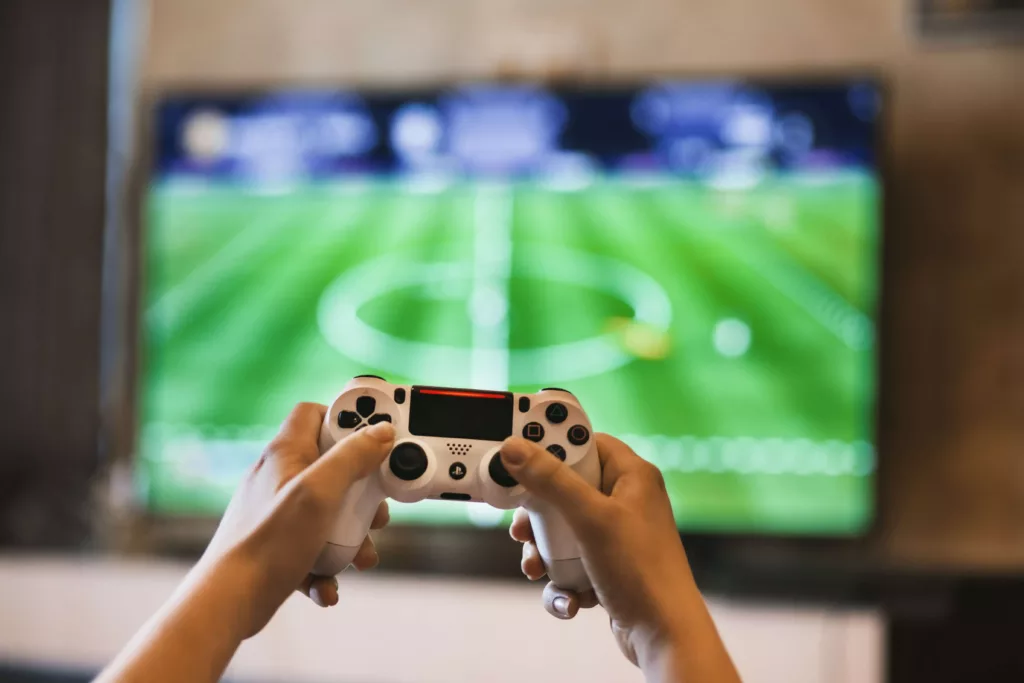The Pandemic has driven a radical increase in screen time for children as they do school at home and their parents struggle to manage them and earn a living.
With no more movies, dates, bars, parties, it has also led to an increase in adult screen time. It’s time to prepare your kids (and yourselves) for the post-pandemic world.
Prepare yourselves for post-pandemic life. Time to reduce your kid’s screen time.
To wrest back control of both our children and our minds from “the screen”, let’s start with some healthy boundary setting!
Take a Video Fast
I’m on the tail end of a 21-day video fast as I write this. That meant limiting screen time to work essentials- no NetFlix, no facebook videos for example.
If you feel like you watching videos when you should be calling friends, pursuing a hobby, spending time talking with your loved ones (as I was) this is a great first step.
In week one, you will think about watching- and not. When you start week two you will begin to really enjoy how much more connected you feel to your parents, kids, and friends. In week three you will contemplate how to resume consumption so that it feels healthier.
Below are four boundaries that will help you and your family. All four involve declaring screen-free zones in your lives.
The Bedroom Screen Time
Wonder why you have less intimacy? Wonder why you or your kids are having trouble going to sleep?
Studies show that screens stimulate our brains making it harder to go to sleep.
Light from screens reduces naturally produced melatonin in the brain making it more difficult to sleep.
This impacts children and adults and is particularly true for teenagers whose natural inclination is to go to bed late anyway.
Watching videos as a couple will naturally divert your attention from one another as well.
Get screens out of the bedroom if at all possible. Avoid using your laptop in your bedroom after working hours. That includes smartphone screen time.
Make this a rule for your children as well. Educate them on why as well. Help them to understand that not only are you asking this of them but you war practicing this as well.
If this is hard to do, go back to the 21-day fast concept and wean yourself away from screens first.
Before Work/School
In many homes, having screens on in the background is habitual.
Everyone is getting themselves together (or not) for their day with their “friend”, the screen, in the background.
It just seems to make it easier.
If this is not you then move on to the next area. If it is, kill morning screen time in the mornings before work and school.
First, it is a distraction to one another and families have little enough time to chat even if it’s a few grunts at breakfast.
Second, it actually slows down the preparation process. Going to work or school is far more effective if we have our eyes on the tasks related to those endeavors than if we drift into them with half a mind on whatever we are watching.
The transition from awakening to working is key!
How we set ourselves and the mindset we help our children enter into this time with is vital, especially now that we are shifting between virtual and live school in the pandemic.
When routines change weekly, being mindful in the transition period becomes even more pertinent.
Dinner Time
Studies show that families who have dinner together have a lower incidence of early alcohol use in children and higher academic achievement.
That is dinner without a screen. Make mealtime an opportunity to share in a family experience.
Even if your kids are eating alone, make no video a practice so that they are focusing on what they are eating, and how full they are or are not.
Mindless (focused on a screen) eating can lead to over-eating as we are eating mechanically while we focus on what is in front of us.
Screen Time In The Car
In the car is a chance to communicate with your children.
Often kids (and even adults) will share things while they are all forward-facing watching the road that they won’t when sitting face to face.
Let’s face it, screens and cars are a bad mix, particularly if you’re the driver. If you were JUST the chauffeur, then maybe the passengers would get to watch TV, but you are not.
You are taking time out of your day to drive them and your payback is quality time. That includes smartphones and texting. Anything the driver does not get to do the passengers don’t.
This can be a challenge, especially with your spouse but I promise you it’s worth it!
So What Now?
When you think about it, killing screentime in these four areas is not a big reduction in time AND these are the four areas that will get you back the most opportunity for conversation and interaction both with your children and your spouse.
It’s also the starting point for setting some more limits down the line.
We are all into screens in a big way right now and winding down our screen time will take an effort of will.
Screen time is not always negative and we will be talking about how you can use screen time to build reading skills in future blog posts.
You will get pushback both from yourself and your family. Stick to your resolve. The ROI is totally worth it!


